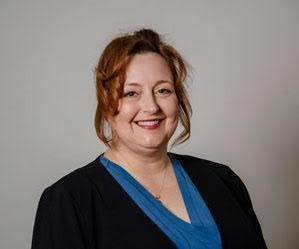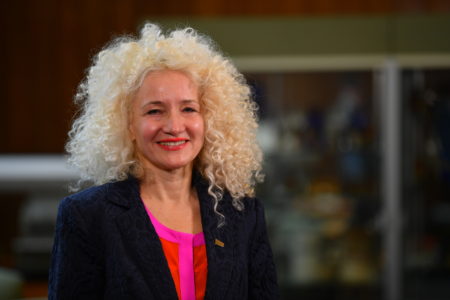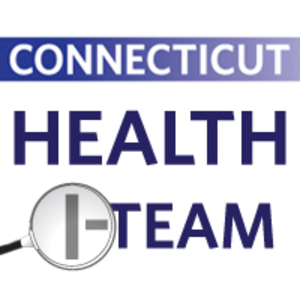By Christopher Hoffman

iStock Photo.
When Connecticut needed a computer system for its planned health information network, it came up with a novel solution.
Instead of hiring consultants, the state tapped the University of Connecticut to develop the software for the network known as Connie. In 2017, the school created a new unit called UConn Analytics and Information Management Solutions—UConn AIMS for short—to do the work.
Providing the computer architecture for Connie, an electronic system allowing health care professionals and entities like hospitals and labs to access patient information statewide, was supposed to be just the beginning for UConn AIMS, director Alan Fontes said.
The Core Analytic Data System — CDAS for short — created for Connie had many other uses beyond health care, Fontes said.

“It was bringing these resources into the state as state assets. They would have had it as an asset instead of going out and hiring a lot of consultants.”
— Alan Fontes, former UConn AIMS director
Today, UConn AIMS is out of business, 20 people are out of jobs and the system developed for Connie at the cost of about $20 million has been discarded and dismantled.
Around the time of Connie’s launch in May 2021, the Office of Health Strategy (OHS), which was in charge of standing up the network, ended the funding and discarded the customized system UConn AIMS had spent four years developing. In its place, the agency purchased an existing system developed for Maryland’s health information network, whose annual cost will approach $1 million next year, Connie spokeswoman Jami Ouellette said.
Why UConn AIMS’ system was dumped and dismantled is unclear. Connie, an independent nonprofit, played no role in the decision, Ouellette said in an email.
“The UConn AIMS contract was funded by OHS directly to UConn AIMS,” she said. “Connie has never had a contract with UConn AIMS, and therefore, did not have any authority regarding UConn AIMS contract decisions.”
Former OHS Executive Director Vicki Veltri, who left the agency July 1, would only say that UConn AIMS’ federal funding ran out at the end of 2020. In an interview earlier this year, Veltri, who had high praise for the CDAS system in an August 2020 UConn Today article, said she consulted with UConn and the state Department of Social Services (DSS), and “there was a combined decision to go in another direction.”
“They Basically Threw It Away”
But Stephanie Reitz, UConn spokeswoman and manager of media relations, said the school, which defends the system, only agreed to withdraw UConn AIMS’ system “when it became evident that the funding would expire without other sources available to continue supporting it.
UConn is disappointed that Connie does not use the innovative system its unit spent years and millions of dollars developing, Reitz said.

”
Stephanie Reitz, UConn spokeswoman.
“UConn wishes the work of AIMS would have led to a different outcome,” she said. “The university entered into the endeavor with OHS to develop a novel data analytics solution better than products offered by private contractors and that could add value to the state and beyond. We believe that [UConn AIMS’] product did exactly that.”
The discarding of their system left three UConn AIMS team members, all of whom lost their jobs, so angry and frustrated that they filed a complaint late last year with the State Auditors of Public Accounts asking it to investigate. The auditors, per their policy of neither confirming nor denying investigations, declined comment.
“They basically threw it away,” former UConn AIMS Deputy Director Christopher Gracia told C-HIT. “It hurts because we put a lot of time and money into it for the state. It hurts that the citizens, the residents of the state, aren’t going to experience what they could have had.”
Assessment Blindsides UConn AIMS
The effort to create a Connecticut health information network has a long and checkered history. Three attempts over nearly a decade ended in expensive failures. In 2017, the state decided to try again.
Connie, the latest attempt, was to have two purposes: enable medical personnel statewide to access a patient’s full medical history regardless of where the records are kept and analysis to improve care and reduce costs.
The legislature assigned the job of standing up Connie to OHS, which hired several consultants, including UConn AIMS. OHS ultimately paid the unit about $20 million, most of it federal funds, to develop Connie’s computer architecture and analytics.
In the summer of 2020, with the system ready to go and Connie’s launch approaching, OHS, in agreement with the Department of Social Services, decided to conduct an assessment. It assigned the task to another consultant on the project, Michigan-based Velatura Services LLC.
In October 2020, a month before Connie was scheduled to launch, Velatura issued a report concluding UConn AIMS’ system was flawed and recommending it be abandoned in favor of one from an outside contractor. Velatura did not recommend an outside vendor.
The assessment blindsided Fontes and Gracia. Fontes contested the findings and accused Velatura of bad faith, saying the firm didn’t make it clear until late in the process that it was doing an assessment instead of seeking a demonstration. Velatura also never provided the parameters on which the system would be judged, they said.
Fontes said he was angry that the assessment slammed UConn AIMS for using simulated instead of real data to test its system when OHS was supposed to provide the real data but never did.
In addition, Fontes and Gracia accused Velatura of reneging on a promise to allow UConn AIMS to review the assessment and respond before it was designated final. Lisa Moon, who led Velatura’s assessment team, initially told Fontes in emails that the report was final and “not modifiable.”
But under pressure from UConn AIMS, Allan Hackney, who was OHS health information technology officer at the time, returned the report to draft.
Hackney, who was in charge of the Connie project starting in 2017, resigned at the end of 2020. He did not respond to voicemails left on his phone or a message sent to his LinkedIn account seeking comment.
Factual Errors, Lack Of Transparency, Omission Of Key Factors
UConn’s administration backed Fontes and his team. Radenka Maric, who at the time was UConn’s vice president for research, innovation and entrepreneurship, sent Veltri and DSS Commissioner Deidre Gifford a seven-page letter dated Nov. 9, 2020, detailing shortcomings in Velatura’s assessment. (Read Maric’s letter below.)
Those shortcomings included “factual errors, misrepresentation of scope and purpose, omission of key factors necessary for evaluation, and lack of transparency and engagement with key constituents during the evaluation and review process,” wrote Maric, who has since become UConn’s interim president.
“UConn feels very stringently that serious flaws in this document prevent its consideration as part of a critical assessment of [the system’s] functionality at this time.”

— Radenka Maric, UConn interim president
She went on to note that “good faith” and “clear objectives and evaluation criteria … are lacking in the current draft report.”
Reached via email, Velatura did not respond to questions about UConn’s criticisms of its assessment, instead sending a general four-sentence statement defending its work on the Connie project.
“As a consultant to the state of Connecticut as they were standing up Connie, Velatura completed our contract deliverables to the full satisfaction of both parties,” company spokeswoman Emily Mata said in the statement.
Fontes and Gracia said they heard nothing from OHS in the weeks following UConn’s letter.
“No one communicated with me at all,” Fontes said.
Then in late December, OHS sent UConn AIMS an order to stop working at the end of the year, saying its federal funding was running out.
Veltri said Velatura’s assessment played no role in the funding cutoff. She said OHS had to stop providing money because it was unsure whether a new request for federal funds would be approved.
Meanwhile, the announced November 2020 launch of Connie was pushed forward to spring 2021. However, Fontes still had heard nothing from Connie or OHS about the assessment or whether UConn AIMS’ architecture would be used.
Veltri Acknowledges ‘Concerns’ About Assessment, Shelves It
UConn AIMS managed to struggle along until its funding was restored in early 2021, Fontes said.
In mid-March 2021, Veltri wrote UConn a letter formally responding to UConn’s criticisms of the assessment that was sent more than four months before. Vetri reiterated that her office had not reviewed the report before it was circulated but said it had now done so.
“As you know, we had concerns about the draft report. Because of these concerns, the report was not finalized or published, nor will it be.”
— excerpt from Vicki Veltri letter of March 16, 2021
In a May interview with C-HIT, however, Veltri denied that her decision constituted a withdrawal of the assessment. When pressed whether she agreed with the assessment’s conclusions, she said, “I stand by the work product.”
UConn, however, took Veltri’s letter as acknowledgment that “the report’s flaws were significant to the point of invalidating the draft [assessment] in its entirety,” university spokeswoman Reitz said.
UConn AIMS Terminated, Architecture Discarded
Even as Connie finally launched in May 2021, UConn AIMS heard little or nothing from OHS about the status of their system, Fontes said. With little to do and its staff shrinking, the office focused on fine-tuning what it had built, Fontes said.

“We were in limbo,” Gracia said.
Cloe Poisson Photo.
Software engineer Chris Gracia lost his job as deputy director of UConn’s Analytics and Information Management Solutions (AIMS).
In July 2021, OHS lowered the boom, informing Fontes that it would not use UConn AIMS’ system and terminating its contract. No reason was given, but Fontes said he believes it was because of Velatura’s assessment.
“That report was what they wanted to use to shut us down,” he said. He still does not fully understand why.
In the meantime, OHS purchased an existing system from CRISP, Maryland’s health information network, Connie spokeswoman Ouellette said. The annual cost is close to $1 million.
UConn AIMS’ cost per year would have been comparable, but Fontes and Gracia say their system, which had been specifically tailored to Connecticut’s needs, would have been better.
UConn AIMS limped along for a few months, attempting to salvage pieces of what it had built and market them to other state agencies, but nothing came of it, Fontes said. At the end of September last year, Fontes let his last employees go.
Fontes stayed at UConn until he retired from the state in April. Gracia now works in the private sector.
“It felt bad at first,” Gracia said of UConn AIMS’ demise. “But by the end, we were all glad to be out of the state. It’s like a relief. It was just so chaotic and unorganized. They didn’t have the right people managing the effort. They didn’t have the right people managing the vendors. They didn’t have the right people managing us. They just didn’t have the right people.”
Support Our Work
The Conn. Health I-Team is dedicated to producing original, responsible, in-depth journalism on key issues of health and safety that affect our readers, and helping them make informed health care choices. As a nonprofit, we rely on donations to help fund our work. Donate Now


